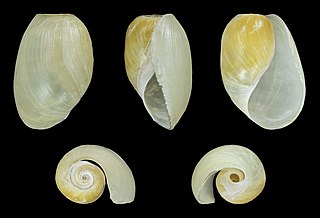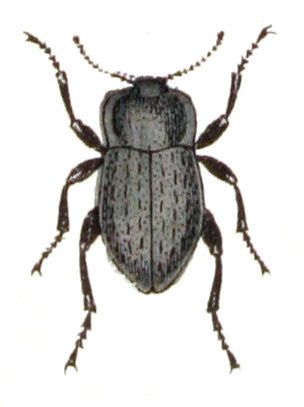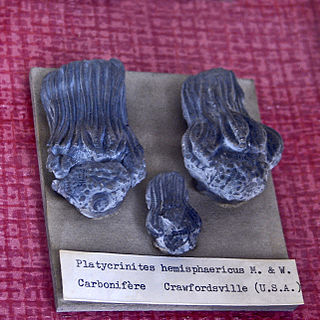Aaadonta pelewana is a species of snail, a terrestrial pulmonate gastropod mollusk in the family Endodontidae. It is found in Palau, where it was known from Peleliu and Koror. If it is still extant, it is threatened by the destruction and modification of its tropical moist lowland forest habitat.

Epomophorus is a genus of bat in the family Pteropodidae. They have a distribution throughout Africa.
Eprhopalotus is a genus of hymenopteran insects of the family Eulophidae. Their distribution varies between species but ranges from Costa Rica, Mexico to Texas. There are currently 5 species of Eprhopalotus:
Aacocrinus is a genus of extinct sea lily from the Actinocrinitidae family. There are currently 14 species within this genus:

Aades is a genus of beetles in the family Curculionidae, commonly known as weevils. These insects are found in various parts of the world, including North and South America, Asia, and Europe. They are generally small in size, with most species measuring between 2 and 7 millimeters in length.

Akera bullata, named the royal flush sea slug, is a species of sea snail, a marine opisthobranch gastropod mollusk in the family Akeridae, a family that is related to the sea hares. This species is the only European representative of the genus Akera.
Aagaardia is a genus of fly in the Chironomidae family. Aagaardia has been found in Finland, the mainland of Norway and Russia.
Aaglacrinus is an extinct genus of crinoidea in the Cladia order. It has been proposed that it was a stationary (attached) suspension feeder the hard parts of which were composed of magnesium calcite.

Anagyrus is a large genus of parasitic wasps from the family Encyrtidae. Anagyrus is distributed throughout the world. A subgenus of Anagyrus is known as Nesoanagyrus

Asida is a large genus of darkling beetles. They have been located around western Europe, in particular near the Mediterranean Sea.
Chodsigoa is a genus of shrews in the tribe Nectogalini.
Episoriculus is a genus of shrew in the red-toothed shrew subfamily. Its common is brown-toothed shrew. It has been described as a subgenus to Soriculus in the past. The genus occurs at a number of locations in Asia, including Nepal and China.
Aaka is a genus of hemiptera in the leafhopper family. There is only one species described in this genus, known as Aaka coera. It is distributed in Papua New Guinea.
Aalatettix is a genus of groundhopper, in the family Tetrigidae, with species found in southern China.

The Camerata or camerate crinoids are an extinct subclass of Paleozoic stalked crinoids. They were some of the earliest crinoids to originate during the Early Ordovician, reached their maximum diversity during the Mississippian, and became extinct during the Permian–Triassic extinction event. Camerates are the sister group of Pentacrinoidea, which contains all other crinoids. The two largest camerate subgroups are the orders Diplobathrida and Monobathrida.

Platycrinites are an extinct genus of Paleozoic stalked crinoids belonging to the family Platycrinitidae.
The Hindsville Formation, or Hindsville Limestone Member of the Batesville Formation, is a geologic unit in northern Arkansas and eastern Oklahoma that dates to the Chesterian Series of the late Mississippian. Named for the town of Hindsville in Madison County, Arkansas, this unit is recognized as a member of the Batesville Formation in Arkansas and a geologic formation in Oklahoma. Although, some workers have proposed raising the rank of this interval in Arkansas to formation status. Both the Batesville and Hindsville Formations overlie the Moorefield Formation and underlie the Fayetteville Shale.

The Bloyd Formation, or Bloyd Shale, is a geologic formation in Arkansas. It preserves fossils dating back to the Carboniferous period.
The Pitkin Formation, or Pitkin Limestone, is a fossiliferous geologic formation in northern Arkansas that dates to the Chesterian Series of the late Mississippian. This formation was first named the "Archimedes Limestone" by David Dale Owen in 1858, but was replaced in 1904. The Pitkin conformably overlies the Fayetteville Shale and unconformably underlies the Pennsylvanian-age Hale Formation. Some workers have considered the shales at the top of the Pitkin Formation to be a separate formation called the Imo Formation. More recently, others have considered the Imo to be informal member of the Pitkin Formation.







